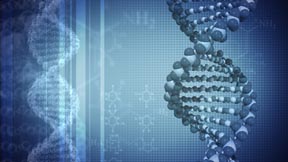The mechanism by which a gene that may provide a neuro-protective effect for Parkinson’s disease has been identified, say researchers at the University of Alabama at Birmingham and the University of Alabama. Findings published Feb. 8, 2012, in the Journal of Neuroscience advance understanding of VPS41, a gene previously discovered to have a protective function in a worm model for nerve degeneration that mimics Parkinson’s disease in humans.
 VPS41 was one of five genes that UA scientists showed in 2008 had protective capabilities against Parkinson’s hallmark trait — age-associated loss of dopamine neurons.
VPS41 was one of five genes that UA scientists showed in 2008 had protective capabilities against Parkinson’s hallmark trait — age-associated loss of dopamine neurons.
“This gene represents a previously unexplored protein therapeutic target for Parkinson’s disease,” said Guy Caldwell, Ph.D., professor of biological sciences at UA and co-author of the article.
The researchers used specific strains of C. elegans, a tiny nematode worm, as an animal model for the work along with human cultures.
“The C. elegans model is an extremely powerful tool to help find potential protective genes that we may have never thought to look at,” said Talene Yacoubian, M.D., Ph.D, an assistant professor in neurology at UAB and study co-author. “Screening large numbers of genes for their protective potential is feasible in these worms but not so in mammalian models. The hope is that this will lead to the development of new and better therapies for Parkinson’s, but we still have more work to do in understanding the role of VPS41.”
The genetically engineered worms contain a human protein, alpha-synuclein, within their cells. Scientists have learned that people with too many copies of the code for alpha-synuclein within their DNA will contract Parkinson’s.
Extra copies of alpha-synuclein can lead to repeated protein misfolding and the death of the dopamine-producing neurons in the brain. In Parkinson’s patients, the death of these neurons leads to tremor and rigidity in the limbs, difficulty in movement and impaired reflexes.
“The main advance here is that we have mechanistically defined how VPS41 appears to convey its protective capacity to neurons — not only in worms, but also in human dopamine-producing neuron cultures,” Caldwell said.
“There’s much work to be done before we can know if these findings will lead to a useful therapy for the disease, but this is the sort of novel discovery that can pave the way and bring us one step closer to that day,” said David Standaert, M.D., Ph.D., professor and chair of the Department of Neurology at UAB and director of the Center for Neurodegeneration and Experimental Therapeutics.
The study was primarily funded by the Michael J. Fox Foundation for Parkinson’s Research.
The article’s lead author is Adam Harrington, Ph.D., who earned his doctoral degree from UA in December 2011 while working in the Caldwell lab. Additional co-authors are Kim Caldwell, Ph.D, associate professor of biological sciences at UA, and Sunny Slone, a research assistant in the UAB CNET.